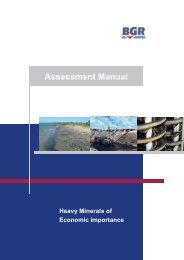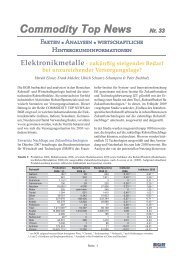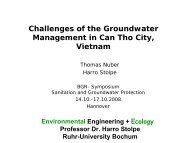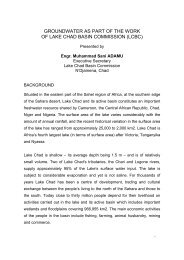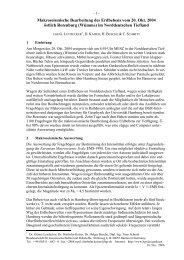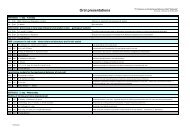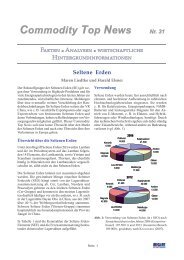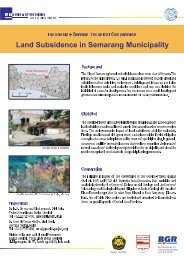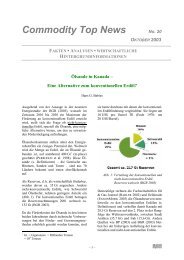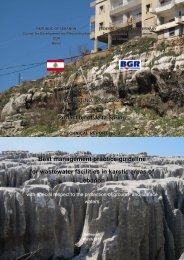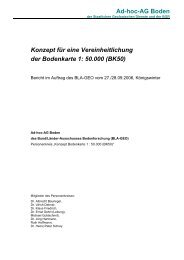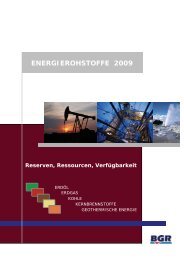THE SMOOTH SOUNDING GRAPH. A Manual for Field Work ... - BGR
THE SMOOTH SOUNDING GRAPH. A Manual for Field Work ... - BGR
THE SMOOTH SOUNDING GRAPH. A Manual for Field Work ... - BGR
You also want an ePaper? Increase the reach of your titles
YUMPU automatically turns print PDFs into web optimized ePapers that Google loves.
9<br />
This <strong>for</strong>mula has a fundamental consequence <strong>for</strong> geo-electrical field<br />
measurements: In order to bring a direct current into the earth we want a<br />
contact between the electrode and the ground. A perfect "point source" is<br />
technically impossible. The electrode must have a finite surface touching<br />
the earth. Suppose we use a spherical shaped copper electrode (Fig.4)<br />
with radius r1.<br />
The resistivity of copper is compared with the resistivity ρ of the earth<br />
practically zero. From equation (5) results, that the resistance of the<br />
whole infinite half-space outside the electrode (r2 → ∞) is<br />
R 1,<br />
∞ =<br />
ρ<br />
2π r<br />
= RA<br />
This is a finite (!) value depending on the size of electrode A. The larger<br />
the contact surface 2πr1 2 , the lower the resistance. Although the resistivity<br />
ρ of the homogeneous earth is contained in this <strong>for</strong>mula, the resistance is<br />
mainly influenced by r1 and of course – not included in this <strong>for</strong>mula - by<br />
the quality of the contact copper-earth (the <strong>for</strong>mula is based on an ideal<br />
contact).<br />
Adding the second electrode B (Fig. 5) with a radius rl' we will measure a<br />
resistance<br />
RA+ B<br />
=<br />
1<br />
⎟ ρ ⎛ 1 1 ⎞<br />
⎜ +<br />
π ⎝ r1<br />
r ' ⎠<br />
2 1<br />
This resistance can be decreased by enlarging the contact surface of ei-<br />
ther A or B or both of them. As this cannot be controlled in field work we<br />
have no chance to calculate ρ by this 2-point electrode configuration. Re-<br />
markable is the fact, that equation (6) is independent of the distance be-<br />
tween A and B!<br />
(6)



